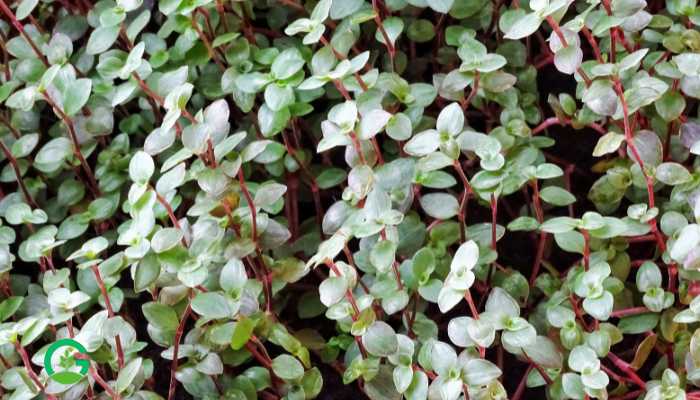Are you looking for a unique and easy-to-care-for houseplant to brighten up your living space? Meet the Turtle Vine Plant! This charming plant, with its small, thick leaves and trailing vines, is perfect for both novice and experienced gardeners.
In this article, we’ll dive into everything you need to know to grow and care for your Turtle Vine Plant, from choosing the right location to watering tips and more. Let’s get started!
Turtle Vine Plant Table of Contents
Introduction to Turtle Vine Plant
The Turtle Vine Plant, also known as Callisia repens or Inch Plant, is a delightful addition to any indoor garden. This versatile plant is native to Central and South America and is well-loved for its trailing stems adorned with tiny, turtle-shell-like leaves. It’s not just its cute appearance that makes it a favorite; the Turtle Vine Plant is also incredibly hardy and easy to grow, making it ideal for plant enthusiasts of all levels.

Choosing the Right Spot for Your Turtle Vine Plant
Where should you place your Turtle Vine Plant to ensure it thrives? Finding the right spot is crucial. This plant loves bright, indirect light, so a location near a window with filtered sunlight is perfect. Avoid direct sunlight, as it can scorch the leaves. If you notice the leaves turning yellow, it might be a sign that your plant is getting too much light.
Potting Your Turtle Vine Plant
Selecting the right pot is the first step in giving your Turtle Vine Plant a good home. Choose a pot with good drainage to prevent water from sitting at the bottom and causing root rot. Terra cotta pots are a great option as they allow for better air circulation. When potting, ensure the plant is at the same depth it was in its original container to avoid stress.
Soil Requirements
The Turtle Vine Plant isn’t too fussy about soil, but it does best in a well-draining potting mix. A standard houseplant soil mix with some added perlite or sand to improve drainage is ideal. This setup ensures that water can move freely through the soil, preventing the roots from becoming waterlogged.

Watering Your Turtle Vine Plant
How often should you water your Turtle Vine Plant? This is a common question among new plant parents. Turtle Vine Plants prefer to be kept on the drier side. Water thoroughly when the top inch of soil feels dry to the touch. In the warmer months, this might mean watering once a week, while in the cooler months, you can reduce the frequency. Overwatering is a common mistake, so it’s better to err on the side of underwatering.
Light Requirements
Light is a crucial factor in the health of your Turtle Vine Plant. These plants thrive in bright, indirect light. Think of them as Goldilocks: not too much light, not too little, but just the right amount. If your plant isn’t getting enough light, it might become leggy and lose some of its vibrant color. On the flip side, too much direct sunlight can cause the leaves to burn.
Temperature and Humidity
Turtle Vine Plants are quite forgiving when it comes to temperature. They thrive in typical indoor temperatures ranging from 60°F to 75°F (15°C to 24°C). They also appreciate moderate humidity. If your home is particularly dry, especially in winter, consider placing your plant on a humidity tray or using a room humidifier.
Image | Product Name | Review | Price |
Fertilizing Your Turtle Vine Plant
Feeding your Turtle Vine Plant is simple. During the growing season (spring and summer), use a balanced, water-soluble fertilizer once a month. Dilute the fertilizer to half the recommended strength to avoid over-fertilizing, which can lead to salt buildup in the soil and harm the plant. In the fall and winter, reduce feeding as the plant’s growth slows down.
Pruning and Maintenance
Pruning helps keep your Turtle Vine Plant looking its best. Trim back any leggy growth to encourage a fuller, bushier appearance. Use clean, sharp scissors to cut just above a leaf node. Regular pruning not only keeps your plant in shape but also promotes healthier growth by allowing more light and air to reach the inner leaves.
Propagating Turtle Vine Plant
One of the joys of owning a Turtle Vine Plant is how easy it is to propagate. To propagate, take a healthy stem cutting about 4-6 inches long. Remove the lower leaves and place the cutting in a glass of water. After a few weeks, roots will develop, and you can then pot the cutting in soil. Alternatively, you can plant the cutting directly in moist soil and keep it humid until roots form.
Read More
Common Pests and Problems
Like all plants, the Turtle Vine Plant can occasionally face pests and problems. The most common pests are spider mites and aphids. Regularly inspect your plant for any signs of these pests, such as tiny webs or sticky residue. If you spot them, treat your plant with insecticidal soap or neem oil. Also, ensure your plant has good air circulation to prevent fungal issues like root rot.
Benefits of Growing Turtle Vine Plant
Why choose a Turtle Vine Plant? Aside from its aesthetic appeal, this plant is known for its air-purifying qualities. It can help filter indoor air, making your home healthier. Plus, its easy-care nature makes it a great choice for those looking to add greenery to their space without a lot of fuss.
Using Turtle Vine Plant in Home Decor
The Turtle Vine Plant is a versatile addition to home decor. Its trailing vines make it perfect for hanging baskets or high shelves where the vines can cascade down. You can also place it in a decorative pot on a tabletop to let its charming leaves spill over the sides. Its compact size means it can fit into small spaces, adding a touch of green wherever it’s needed.

Seasonal Care Tips
Caring for your Turtle Vine Plant may require some adjustments with the changing seasons. In the spring and summer, the plant will be actively growing, so regular watering and feeding are essential. In the fall and winter, growth slows down, and the plant needs less water and no fertilizer. Keep an eye on the light levels as shorter days might mean your plant needs to be moved to a brighter spot.
Conclusion and Final Thoughts
The Turtle Vine Plant is a delightful, easy-to-care-for houseplant that brings a touch of greenery and charm to any home. With its simple care requirements and versatile nature, it’s a fantastic choice for both beginner and experienced plant enthusiasts. By following the tips and guidelines outlined in this article, you can ensure your Turtle Vine Plant thrives and adds beauty to your space for years to come.
Frequently Asked Questions (FAQs)
How often should I water my Turtle Vine Plant?
Water your Turtle Vine Plant when the top inch of soil feels dry. This usually means once a week during the warmer months and less frequently during cooler months.
Can I grow Turtle Vine Plant outdoors?
Yes, Turtle Vine Plants can be grown outdoors in warm climates. They prefer partial shade and should be protected from direct sunlight and frost.
What should I do if my Turtle Vine Plant becomes leggy?
If your Turtle Vine Plant becomes leggy, it’s likely not getting enough light. Move it to a brighter spot and prune back the leggy stems to encourage bushier growth.
How do I propagate Turtle Vine Plant?
To propagate, take a 4-6 inch cutting, remove the lower leaves, and place it in water or directly in moist soil. Roots should develop in a few weeks.
Why are the leaves of my Turtle Vine Plant turning yellow?
Yellow leaves can indicate overwatering or too much direct sunlight. Adjust your watering schedule and move the plant to a spot with bright, indirect light.
By following these guidelines, you’ll enjoy a lush, vibrant Turtle Vine Plant that enhances your living space with its unique beauty. Happy gardening!




















